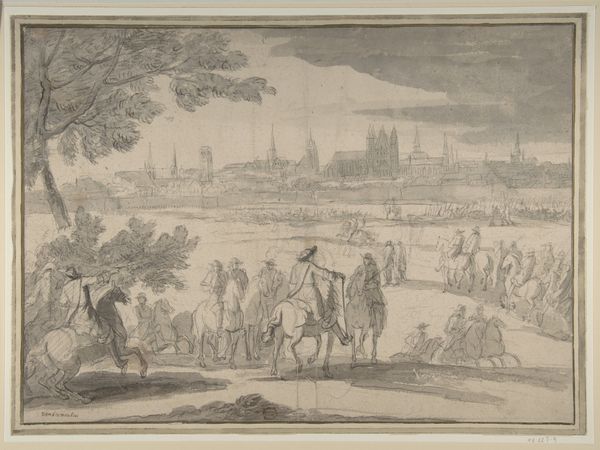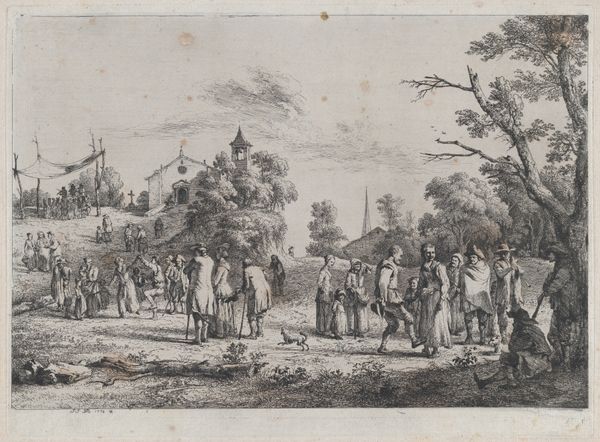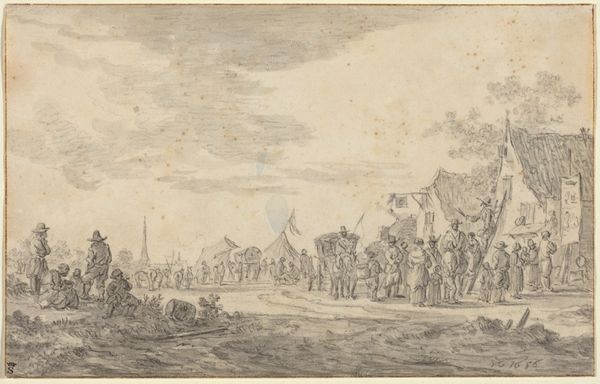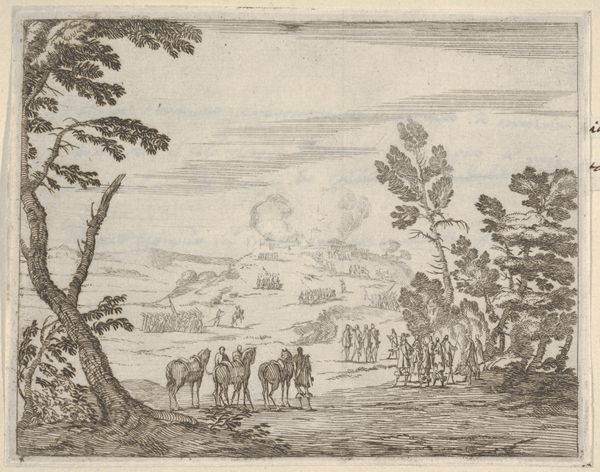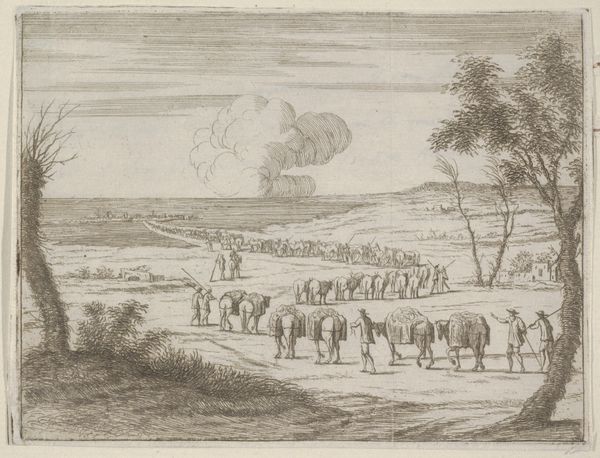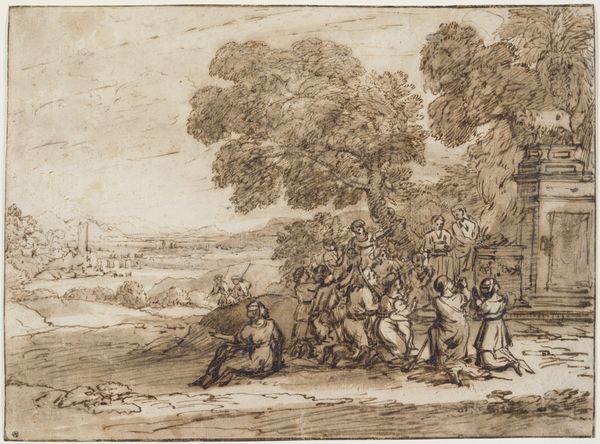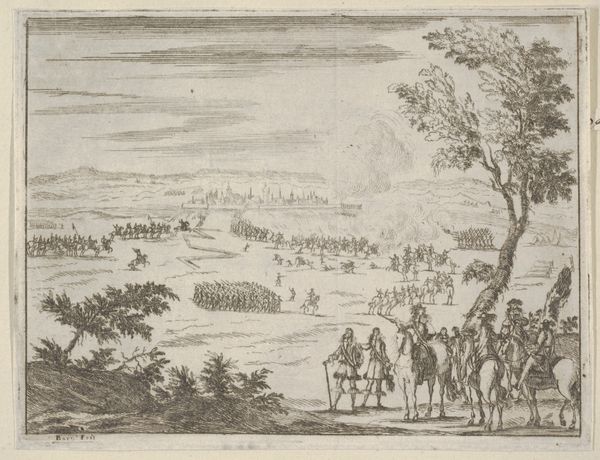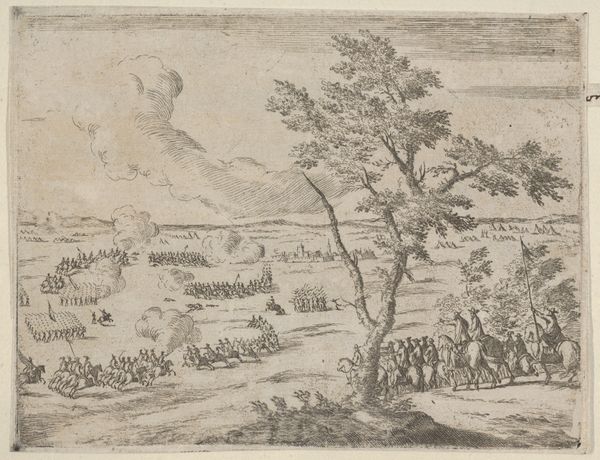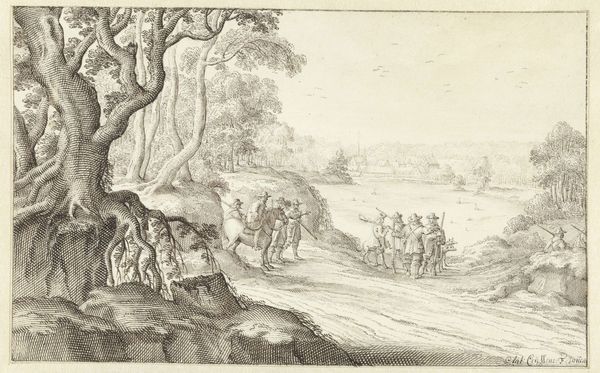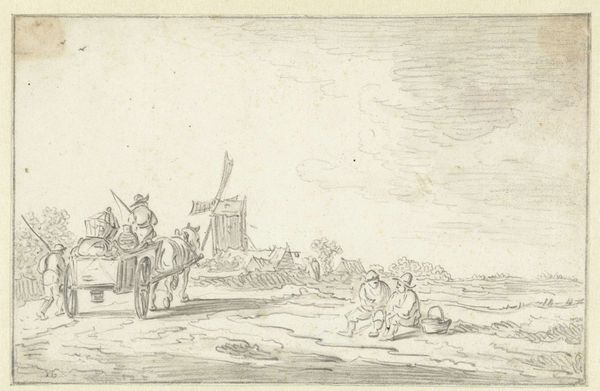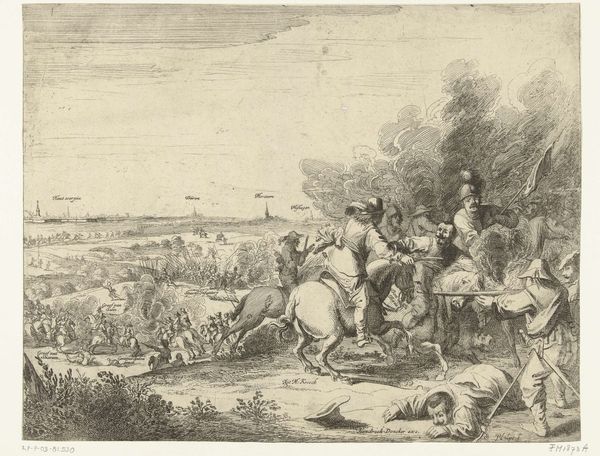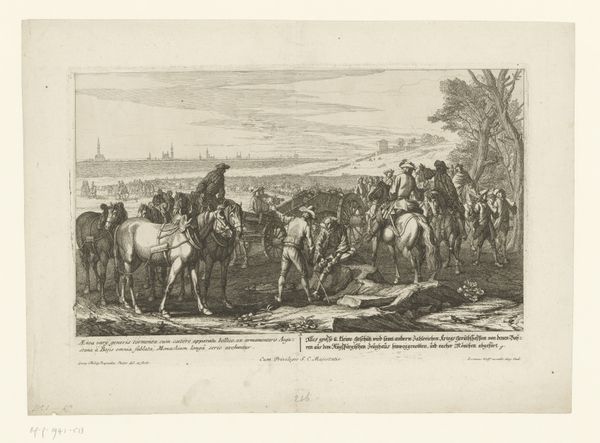
Louis XIV at the Siege of Douai, Seen from the South-East (July 1–6, 1667) 1645 - 1690
0:00
0:00
drawing, print, pencil
#
drawing
#
baroque
# print
#
landscape
#
pencil
#
history-painting
Dimensions: sheet: 11 7/8 x 16 1/8 in. (30.2 x 41 cm)
Copyright: Public Domain
Curator: This drawing, rendered in pencil, depicts "Louis XIV at the Siege of Douai, Seen from the South-East" made between 1645 and 1690 by Adam van der Meulen. Editor: There's an air of detachment, isn't there? The grayscale and hazy detail lend a kind of cool distance, despite the subject being an active siege. Almost like a carefully choreographed observation rather than an immersive battle. Curator: Van der Meulen worked as a painter in the service of Louis XIV. So, his depictions were often imbued with propaganda; framing Louis as a powerful leader through victorious military campaigns. The siege of Douai in 1667 was indeed a pivotal moment in Louis's expansionist policies. It speaks volumes about the constructed nature of power. Editor: Yes, the king's presence dominates visually, though rendered subtly. I keep being drawn to the recurring motif of the horse. Throughout history, the horse has served as a powerful symbol of virility, strength, and aristocracy; a consistent icon across civilizations for those in command. Curator: The horse very deliberately links Louis to previous leaders. By using symbols such as the horse, powerful men across eras establish a perceived shared history. How interesting that such visual markers reinforce gendered and power hierarchies. Editor: The tents, too. They form an almost classical, pyramidal shape which reinforces the idea of a strong base for civilization. We might see the tents as markers for impermanence. I find it poignant, the visual tension between conquest and the ever-shifting grounds on which such feats rest. Curator: It does emphasize a complex interplay, highlighting that triumphs and expansions of territories are temporary, constantly contested spaces—power in motion. Editor: Absolutely. Considering how symbols act as time capsules; a reflection on how we remember, and often rewrite history, isn’t it? Curator: The artwork provides a chance to examine our current perspectives as historical narratives constantly evolve with contemporary concerns and analyses. Editor: This Van der Meulen piece certainly proves how visual cues and iconography have played such integral roles in creating and maintaining narratives, personal and societal.
Comments
No comments
Be the first to comment and join the conversation on the ultimate creative platform.
